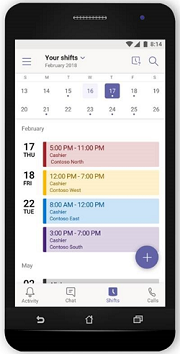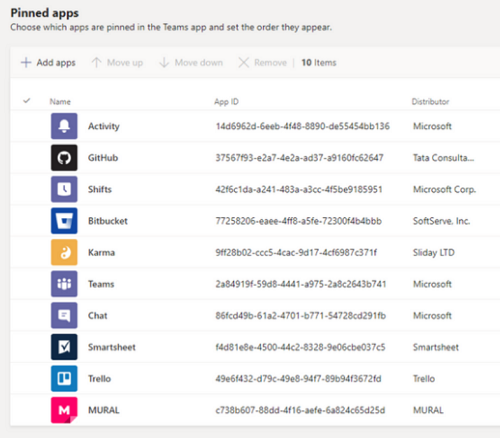More than 6,000 attendees, including more than 500 student-aged developers, gathered in Seattle last week to learn how to better leverage the Microsoft set of tools to deliver business solutions.
While many in the UC community wrongly think of Teams as the next version of Skype for Business, I’ve always described it first and foremost as a platform -- a platform that allows developers and non-developers to streamline business processes. This is what I’ve referred to as Teams’ superpower.
Teams is designed to be deeply configurable and extensible so that it can serve as a “universal hub” while simultaneously honoring a philosophy that each team is unique in how it works and delivers results.
The Teams Shifts app for frontline workers, shown at right, is an excellent example of how extensible Teams is based on use case. With the app, workers can view their upcoming shifts, see who else is scheduled, and request time off while managers can create, update, and manage shift schedules for teams.
At Build, Microsoft announced many new capabilities for the Teams platform that should make developing specialized Teams applications even easier:
1. Improved application distribution, configuration, and permissioning
Microsoft announced improved ability for IT administrators to control which specific applications are available and their order of appearance in the app bar, regardless of whether built by Microsoft, third-party, or your own organization’s developers.
IT admins also can control who in your organization can interact with specific applications and integrations. You can similarly limit access to applications built by your organization. Global policies can block certain applications from your tenant.
Applications from partners will soon support per-seat licensing. This will allow organizations to purchase and deploy applications to specific employees only.
Associated with this, Microsoft is streamlining the app certification process to more transparently highlight security, data handling, and compliance practices. This includes incorporating information from the
Microsoft Cloud App Security catalog and any
Cloud Security Alliance STAR (CSA STAR) information for partner applications.
2. Better Bots
A bot appears just like a team member who you’d interact with in a conversation, except it is always available, 24x7, and is always represented by a hexagonal avatar.
The
Microsoft Bot Framework simplifies building conversational AI experiences for Teams, as well as other platforms.
Bots for Teams can now interact with users inside of 1:1, group, and meeting chats. Users communicate with a bot via rich text or pictures and a bot can respond to users, or provide proactive notification based on external events using rich text, pictures along with cards, and emojis.
3. Single Sign-On for Apps
From a user experience perspective, Teams apps will soon be able to use single sign-on (SSO). This will allow retrieval of an access token from Azure Active Directory without requiring a user to log in again when the app launches from within Teams.
4. Apps on Mobile Devices
Message extensions, channel tabs, personal apps, and task modules will soon be available on iOS and Android mobile devices so that all app features work on all devices (at present only app bots work on mobile devices).
Click below to continue to next page












